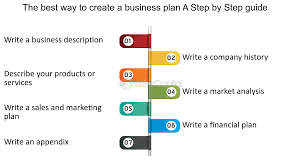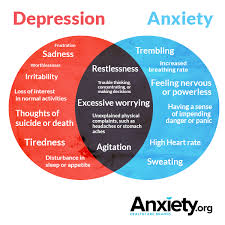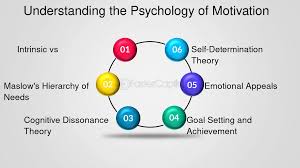Creating a business plan is one of the most crucial steps for aspiring entrepreneurs, as it serves as a roadmap for the business’s future. It helps outline business goals, the strategy for achieving them, and the metrics for measuring success. Whether you’re starting a new business or growing an existing one, a well-thought-out business plan is essential. In this comprehensive guide, we will walk you through the process of creating a business plan that is both clear and effective.
1. What is a Business Plan?
A business plan is a formal document that outlines the goals of a business and the strategy for achieving them. It covers all aspects of the business, including marketing, operations, finance, and more. A business plan serves multiple purposes:
It helps you clarify your vision and objectives.
It can attract investors or secure loans.
It serves as a tool for measuring progress and making adjustments.
While every business plan may differ depending on the industry, size, and goals, the essential components are generally the same.
2. Key Components of a Business Plan
A well-crafted business plan typically includes the following sections:
2.1 Executive Summary
The executive summary is the first section of the business plan, but it’s often written last. It provides a snapshot of the business, including:
The business name and location.
A brief description of what the business does.
A summary of the products or services offered.
The market and target audience.
The business’s financial projections.
Funding requirements, if applicable.
This section is crucial because it is often the first thing investors and lenders see. It should be compelling enough to grab their attention, encouraging them to read further.
2.2 Company Description
The company description section offers an overview of your business. It should answer the following questions:
What does your business do?
What is the mission of your business?
What are the business’s legal structure and ownership?
What is the industry and market your business operates in?
What are the business’s goals?
This section gives readers a deeper understanding of the business’s nature and purpose. It’s an opportunity to show what makes your business unique and explain its place within the market.
2.3 Market Research and Analysis
Market research is crucial for understanding the landscape in which your business operates. This section should demonstrate a thorough understanding of the market conditions, competition, and target audience. Key points to address include:
Market Trends: Are there any emerging trends that could affect your business?
Target Audience: Who are your customers, and what are their needs?
Competitive Analysis: Who are your competitors, and what are their strengths and weaknesses?
Market Size and Growth: What is the potential size and growth rate of the market?
Market research helps to identify opportunities and challenges. It gives potential investors confidence that your business is based on data-driven decisions.
2.4 Organization and Management
In this section, you’ll describe the organizational structure of your business. It should include:
The Team: List key team members, including their qualifications and roles. If you’re a sole proprietor, explain your background and expertise.
Legal Structure: Describe the legal structure of your business (e.g., sole proprietorship, partnership, LLC, corporation).
Advisors: If you have any advisors, mentors, or board members, mention them here.
An experienced and capable team can be a strong selling point to investors. Be sure to highlight the strengths of your team and how they contribute to the business’s success.
2.5 Products or Services
This section focuses on what you are selling or offering to your customers. Be specific about:
The Products or Services: Describe in detail what your product or service is.
Value Proposition: What makes your offering unique? Why should customers choose your product over competitors’?
Development and Production: If applicable, explain how your products are developed or manufactured.
Pricing Strategy: Discuss the pricing model and any unique pricing advantages your business may have.
Providing a clear and concise description of your products or services will help readers understand what your business offers and its potential for success.
2.6 Marketing and Sales Strategy
Your marketing and sales strategy outlines how you plan to attract and retain customers. This section should include:
Marketing Plan: Discuss the methods you’ll use to reach your target audience, such as social media, advertising, content marketing, or email campaigns.
Sales Strategy: Describe your approach to selling your products or services. Will you have an online store, brick-and-mortar location, or both? Will you use direct sales, affiliates, or distributors?
Customer Retention: How will you keep customers coming back? What steps will you take to ensure customer satisfaction?
Your marketing and sales strategy will demonstrate how you plan to generate revenue and ensure long-term success.
2.7 Funding Request (if applicable)
If you’re seeking funding from investors or lenders, you’ll need to include a funding request. This section should address:
The Amount of Funding: How much capital do you need, and how will you use it?
How the Funds Will Be Used: Break down the allocation of funds (e.g., for marketing, product development, hiring staff, etc.).
Future Financial Plans: Explain how you plan to repay any loans or provide a return on investment.
Be clear and specific about the funding requirements, as this section is a critical part of attracting investors or securing a loan.
2.8 Financial Projections
The financial projections section provides a forecast of your business’s financial future. It typically includes:
Income Statement: A projection of your revenues, costs, and profits over a period (usually three to five years).
Cash Flow Statement: A projection of cash inflows and outflows to ensure that your business can cover expenses and stay solvent.
Balance Sheet: A snapshot of your business’s assets, liabilities, and equity.
Break-even Analysis: An estimate of when your business will become profitable.
Financial projections provide a roadmap for the financial health of your business and can help you identify potential issues before they arise. For investors, it demonstrates that you have a well-thought-out plan for generating revenue and managing expenses.
2.9 Appendix
The appendix is where you can include any additional information or documents that support your business plan, such as:
Charts, graphs, and tables.
Product images or mock-ups.
Resumes of key team members.
Legal documents (licenses, patents, etc.).
The appendix allows you to provide extra detail without overcrowding the main sections of your business plan.
3. Tips for Writing a Successful Business Plan
Be Clear and Concise: Avoid jargon and overly complex language. Keep your business plan easy to read and understand.
Be Realistic: While it’s important to be optimistic, make sure your projections and goals are achievable based on market research and available resources.
Tailor Your Plan: Customize your business plan for your audience. If you’re seeking funding, emphasize the financials and return on investment. If it’s for internal use, focus more on strategy and goals.
Proofread: Ensure your business plan is free of errors. Typos or grammatical mistakes can give a poor impression.
4. Conclusion
A well-written business plan is essential for guiding the growth and success of your business. It helps you clarify your vision, attract investors, and secure funding, and it serves as a tool for measuring your business’s progress. By following the steps outlined in this guide, you can create a comprehensive business plan that will set you up for success.
Remember, your business plan is a living document. As your business evolves, update it regularly to reflect changes in your strategy, market conditions, and financial goals. With a solid plan in place, you’ll be well-equipped to navigate the challenges and opportunities that lie ahead




